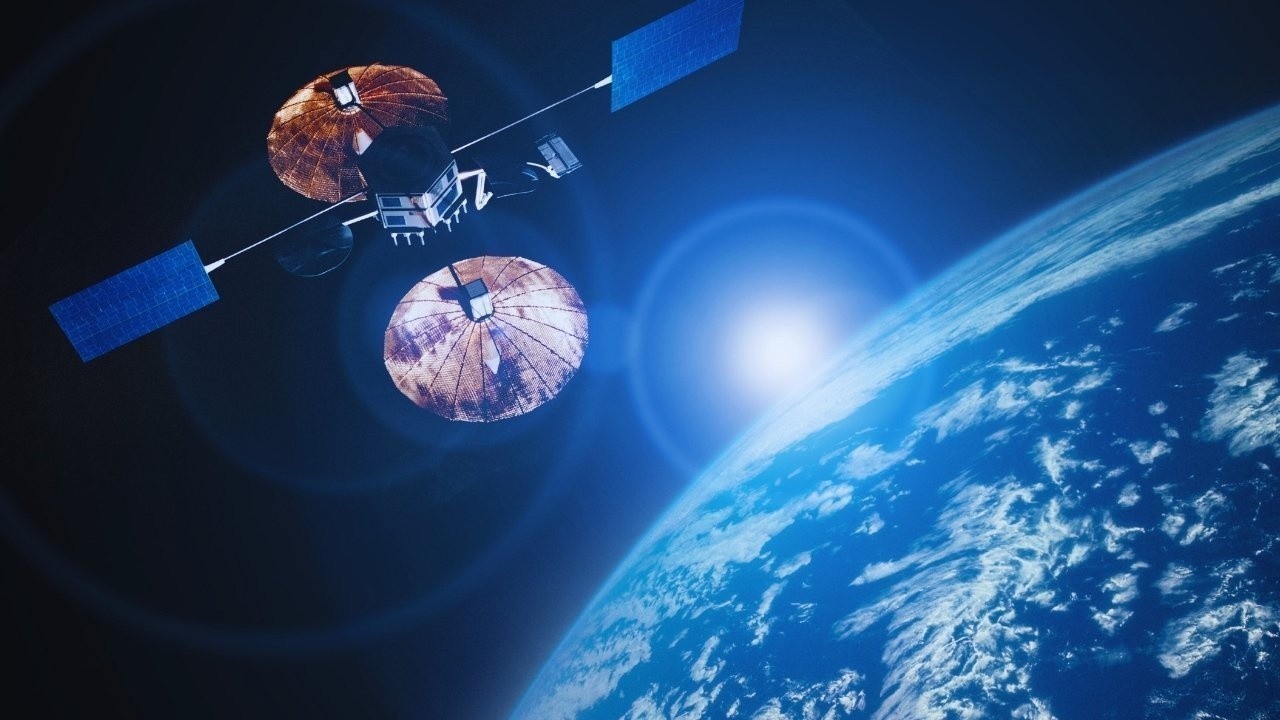
Post by : Anis Karim
The International Space Station (ISS) — one of humanity’s greatest engineering achievements — is nearing the end of its historic journey. After 32 years of continuous operation, NASA and its global partners are preparing to retire the orbiting laboratory that has served as a symbol of international collaboration and scientific discovery. As the ISS era concludes, a new chapter in space exploration is unfolding — one defined by commercial innovation, private investment, and the promise of a thriving orbital economy.
Launched in November 1998, the ISS was assembled piece by piece in Earth’s orbit through the combined efforts of the United States, Russia, Europe, Japan, and Canada. Over three decades, it became a hub of cutting-edge research, a testbed for technologies supporting future deep-space missions, and a floating laboratory that hosted more than 250 astronauts from around the world.
The ISS has witnessed countless scientific milestones — from experiments on microgravity’s effects on the human body to testing advanced life-support systems and studying climate patterns from above. It also became a symbol of peace and cooperation at a time when relations on Earth were often tense. The collaboration between former rivals, particularly the U.S. and Russia, represented hope for what humanity could achieve together beyond national borders.
However, with age comes wear. The ISS has exceeded its original 15-year lifespan by more than double, but sustaining it now requires enormous costs and increasing maintenance. Cracks, leaks, and outdated systems have raised safety concerns, prompting NASA and its partners to begin planning for a controlled deorbit by 2031.
Maintaining the ISS has become increasingly expensive — costing NASA over $3 billion annually. Much of this budget goes toward upkeep, repairs, and transporting supplies. As new technologies emerge, operating such an aging structure no longer seems practical.
Moreover, the station’s modules and systems were designed in the 1990s and early 2000s. Despite upgrades, many components are approaching the end of their operational lifespan. The risk of system failures, particularly in pressurization or power distribution, grows each year.
NASA has made it clear that retiring the ISS is not a retreat from low-Earth orbit (LEO) operations, but a strategic step forward. The goal is to transition from a government-funded model to a commercially driven one, freeing resources for new frontiers — including lunar and Martian missions under the Artemis program.
As NASA steps back, private companies are stepping up to take over. The agency has already contracted several U.S. firms to develop commercial space stations that can continue research, host astronauts, and even welcome tourists.
Axiom Space is leading the charge with plans to attach its first module to the ISS by 2026. Once the ISS retires, Axiom will detach and operate independently as the world’s first commercial space station. It will feature research facilities, manufacturing units, and living quarters for private astronauts and space tourists alike.
Another major contender is Orbital Reef, developed by Blue Origin and Sierra Space. Designed as a “mixed-use business park,” Orbital Reef aims to serve government agencies, private companies, and researchers. It will feature laboratory modules, workspaces, and even tourism accommodations, setting the foundation for a new space-based economy.
Backed by Voyager Space and Airbus, Starlab is a single-module commercial station intended for scientific research and technology testing. Scheduled for launch before 2030, it represents the European and private sector’s commitment to maintaining a presence in low-Earth orbit.
These ventures mark a paradigm shift in space operations — from government monopoly to private enterprise. NASA’s strategy is to become one of many customers, purchasing access and services from commercial stations rather than maintaining one itself.
Even after the ISS retires, NASA will continue to play a central role in space research — but as a customer rather than a landlord. This new model mirrors how the agency collaborates with private companies for satellite launches and cargo deliveries.
Instead of owning and operating a space station, NASA will fund experiments and lease facilities aboard private platforms. This approach allows the agency to focus on deep-space exploration while stimulating commercial growth in low-Earth orbit. It also ensures continuous U.S. presence in space, supported by a diversified network of partners.
Moreover, NASA’s partnership model could make space more accessible to universities, startups, and international organizations. By lowering costs and providing new platforms, commercial stations could democratize access to orbit.
The move from government-funded missions to private operations represents a major economic evolution. Analysts estimate that the commercial space industry could reach a value of $1 trillion by 2040. This includes not just tourism, but also manufacturing, medical research, data analysis, and satellite servicing in microgravity environments.
For companies like Axiom and Blue Origin, the business potential extends beyond space tourism. Microgravity manufacturing — producing materials and pharmaceuticals impossible to create on Earth — is seen as a lucrative field. Additionally, space-based entertainment, filming, and branding opportunities are emerging as entirely new markets.
NASA’s investment in private infrastructure acts as both a catalyst and a safety net. By supporting early development through contracts and technical expertise, the agency ensures that the transition from ISS to commercial platforms remains seamless.
The retirement of the ISS marks not only a technological transition but also the end of one of the most successful international collaborations in history. Partners like Roscosmos (Russia), ESA (Europe), JAXA (Japan), and CSA (Canada) are all weighing their roles in the post-ISS era.
Russia, for instance, has expressed interest in building its own station, while China continues to expand its Tiangong space station, which could become a major hub for international missions. Meanwhile, the European Space Agency is collaborating with U.S. firms to ensure continued participation in LEO research.
Although the ISS will eventually burn up in Earth’s atmosphere, its legacy will endure through these global partnerships and the knowledge it generated. It laid the foundation for sustainable space habitation — a stepping stone toward human life on the Moon and Mars.
For millions worldwide, the ISS is more than just a laboratory — it’s a symbol of human unity and ambition. Its spectacular images of Earth, its experiments shaping the future of medicine and technology, and its role as a home to astronauts from diverse nations have captured hearts for decades.
As NASA prepares its farewell, there’s a sense of nostalgia — and pride. The station’s deorbit plan involves guiding it safely into a remote part of the Pacific Ocean, nicknamed “Point Nemo,” where spacecraft are traditionally retired. It’s a fitting end for a structure that has served humanity selflessly for more than three decades.
The end of the ISS does not mark a decline in space exploration — rather, it signals a transformation. The commercialization of low-Earth orbit opens the door for a new era of innovation. Private industry will build on NASA’s legacy, developing habitats that are more efficient, cost-effective, and versatile.
In the coming decades, commercial space stations could serve as hubs for science, manufacturing, education, and even leisure. Tourists could orbit Earth, researchers could test new medicines, and engineers could design the technologies that will power missions to Mars.
The ISS may be retiring, but the torch it lit will continue to shine — carried forward by a new generation of explorers, entrepreneurs, and dreamers.
This article aims to provide a comprehensive overview of NASA’s plan to retire the International Space Station and the rise of commercial space stations. All facts and timelines are based on available public information as of 2025 and may evolve with new developments in space policy and technology.

UAE Ambassador Meets Ecuador Minister to Boost Cooperation
UAE and Ecuador hold talks to enhance bilateral ties, trade, and economic cooperation, strengthening

Truck Driver Shot After Attempted Attack on Coast Guard Base Alameda
Truck driver shot after trying to ram Coast Guard Base Alameda in California. No personnel hurt; FBI

Riyadh Fashion Week 2025 Showcases Saudi Couture with Modern Flair
Saudi designers blend tradition and modernity at Riyadh Fashion Week 2025, with couture collections

Van Cleef & Arpels Unveils the Exquisite Alhambra Collection
Van Cleef & Arpels’ Alhambra collection dazzles with versatile, transformable jewelry blending gemst

Israeli Strike Kills Hezbollah Commander Abbas Karky in Lebanon
Hezbollah commander Abbas Karky killed in southern Lebanon by Israeli strike. IDF says he rebuilt He

Arab TikTok Creator Bridges Cultures Through Travel and Storytelling
Mohammed Taher, TikTok’s Taher Travels, showcases Arab culture globally, inspiring audiences with au

Gulf Craft to Showcase Full Fleet at Qatar Boat Show 2025
Gulf Craft joins Qatar Boat Show 2025 with its full yacht lineup, led by the debut of the all-new No

Aaron Rodgers Plans to Retire as Green Bay Packer
Aaron Rodgers says he will retire as a Green Bay Packer, reflecting on 18 years with the team before

Lewis Hamilton Honors Late Bulldog Roscoe With Fan Tributes
Lewis Hamilton opens up on losing his bulldog Roscoe, sharing how fans’ tributes at Mexico GP comfor

Alex Vesia Misses World Series Due to Family Emergency
Dodgers reliever Alex Vesia steps away from the team during the World Series to handle a family matt

Post Festive Skin Detox Simple Steps to Restore Your Natural Glow
Refresh your skin after festive celebrations with simple detox tips hydration gentle care and a heal

Blue Jays Discuss Bo Bichette’s Availability for World Series
Blue Jays’ Bo Bichette may join World Series lineup as manager Schneider assesses his readiness, com

Thamma (2025) Supernatural Romance & Horror Comedy This Diwali
Discover Thamma 2025 a thrilling horror comedy with romance supernatural twists and stellar performa

Best Foods to Eat During Cancer Treatment for Health & Recovery
Discover the best foods to eat during cancer treatment to boost immunity manage side effects and sup

10 Powerful Cancer Fighting Foods to Boost Your Health Naturally
Discover 10 powerful cancer fighting foods that boost immunity protect cells and support overall hea